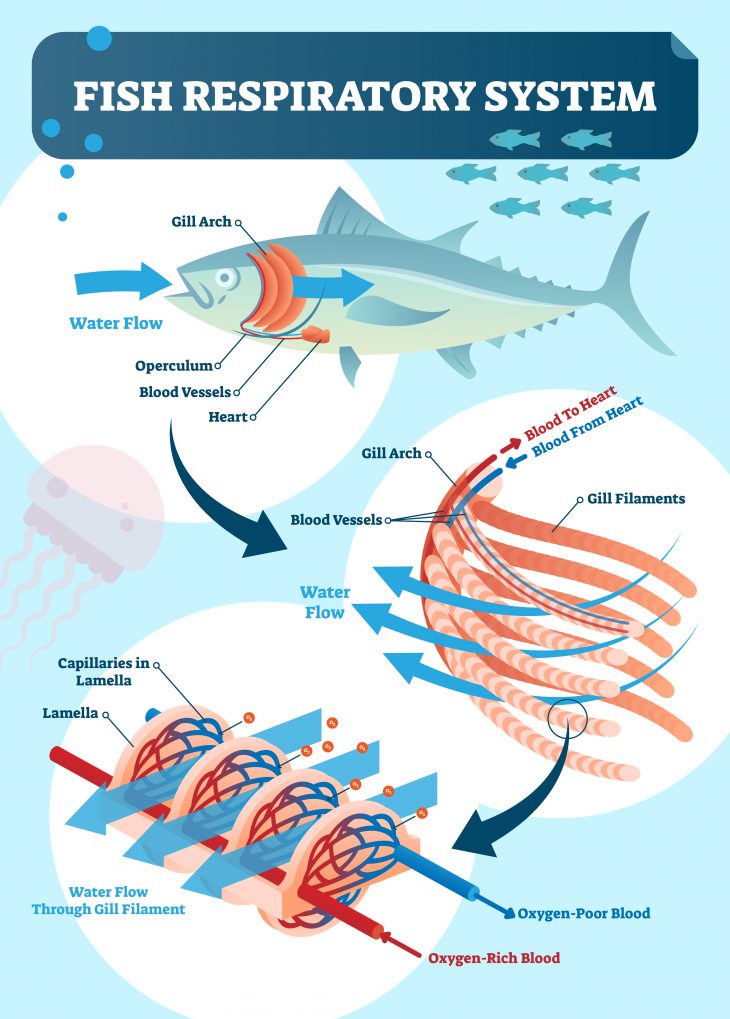Do Fish Have Lungs? Explained with Helpful Infographics

No, fish don’t have lungs, not in general, anyway. Instead, fish breathe underwater thanks to their gills. These gills serve more or less the same purpose as our lungs, however, only instead of extracting oxygen out of the air, fish gills extract oxygen out of the water the fish swim in.
Click on the infographics to download it
Breathing is one of those few essential actions required for most life. The vast majority of multicellular living organisms on the planet – barring just a few fringe exceptions – need oxygen to survive.
Different animals acquire that oxygen in different ways, however – mammals breathe with their lungs, insects breathe through tiny tubes (tracheae) on their exoskeletons, and fish… how do fish breathe in water? Do fish have lungs?
No, fish don’t have lungs, not in general, anyway. Instead, fish breathe underwater thanks to their gills. These gills serve more or less the same purpose as our lungs, however, only instead of extracting oxygen out of the air, fish gills extract oxygen out of the water the fish swim in.
How do gills work?
Fish gills operate on a similar principle to our lungs only with a couple of minor, yet significant, differences. Here are the 3 stages of breathing with lungs in mammals:
- The lungs inhale air through the trachea.
- The lungs’ alveoli – small, cup-shaped cavities in the lungs’ walls – capture the air and exchange oxygen for carbon dioxide from the mammal’s bloodstream.
- The de-oxygenized air is exhaled from the lungs back through the trachea.
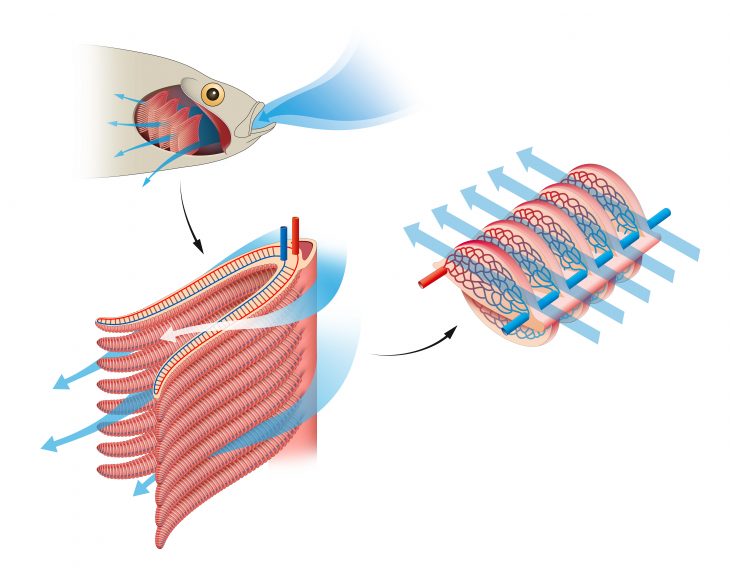
As you can see, lung breathing is quite straightforward. What about fish gills, however, what’s different about them? Here are the 3 steps of fish breathing underwater:
- The fish take in water through their mouth will swimming.
- The water passes through the fish’s gills which are quite simply blood-filled filters. As the water passes through them, the blood that’s flowing through the gills exchanges oxygen for carbon dioxide directly with the water through the extremely thin walls of the gills.
- After the transfer, the de-oxygenized water exits the fish through the gill flaps on the two sides of the fish’s head.
Simply put, mammal lungs and fish gills operate on more or less the exact same principle, only the former extract oxygen out of the air while the latter do so out of water. Still, this difference, as well as the structural differences between lungs and gills are quite significant. It really is fascinating how to different types of organs can serve the same purpose in two completely different environments.
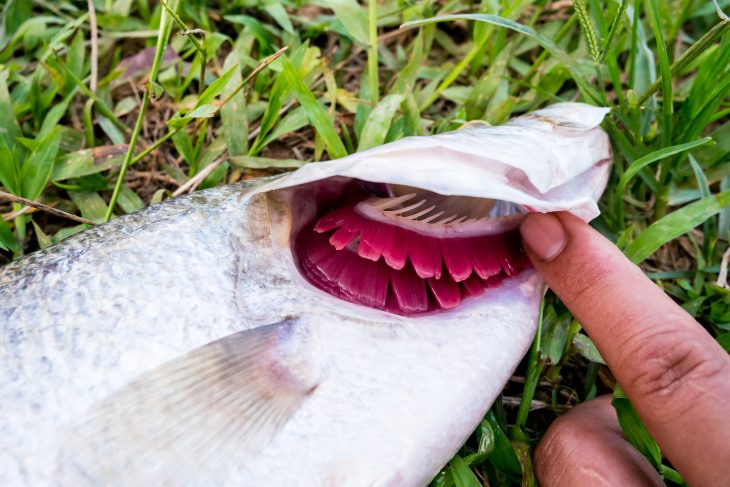
Do fish gills have alveoli?
We mentioned that mammal lungs exchange oxygen for carbon dioxide between the air and the mammals’ bloodstreams via the alveoli in the lung walls. How exactly do fish gills do that, however? Do fish gills have alveoli as well?
No, they don’t. The oxygen for carbon dioxide transfer that happens in fish gills is much more direct – the water and the fish’s blood simply “connect” through the extremely thin walls of the gills and exchange the two gases directly.
This exchange process is further helped by the fact that the blood flow of fish goes in the opposite direction to the water that passes through the gills – it goes toward the front of the fish’s head while the water flows from the mouth toward the back of the fish. If the blood flow of fish was going in the opposite direction and flowed parallel to the movement of the water, the oxygen for carbon dioxide exchange would have been much less significant and fish would not have been able to breathe.
What about dolphins and whales?
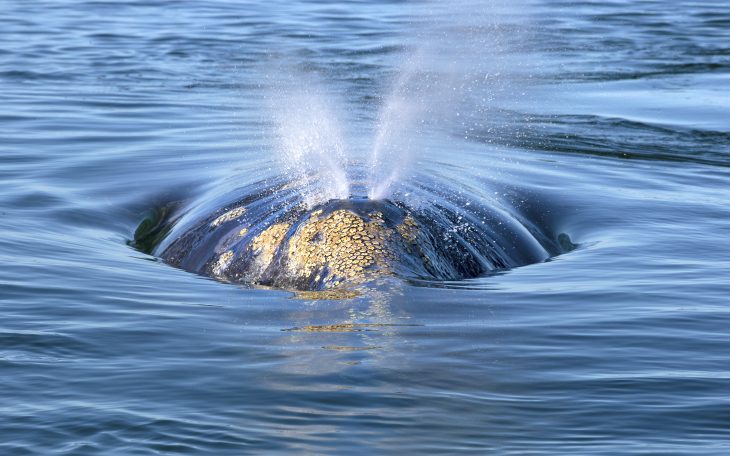
It’s a common misconception that dolphins and whales are fish that have lungs. And they do, in fact, have lungs – that’s why they need to frequently swim to the surface of the water and breathe through their nose – or blowhole – that’s situated on the top of their head. However, they are mammals, just like us.
As a matter of fact, both dolphins and whales are mammals, just like land mammals like us. Their skeletal structure is similar to that of most mammals that walk the Earth down to the finger bones they have in their fins.
So, while dolphins, whales and their other saltwater relatives do have lungs and lack gills, they are not actually fish.
Are there fish that do have lungs?
But are there any types of actual fish that do have lungs? There are, indeed. They make up for a very small part of the fish kingdom, however, which is why we said that “fish don’t have lungs”.
The few fish that have lungs are the aptly named family of “lungfish”. They are a type of freshwater Rhipidistian fish that belong to the subclass Dipnoi. They retain several characteristics from the more primitive Osteichthyes fish – they have functional lungs that can breathe air, but they also have a bone structure that’s similar to that of the primitive Sarcopterygii and it even has lobed fins and a well-developed internal skeleton.
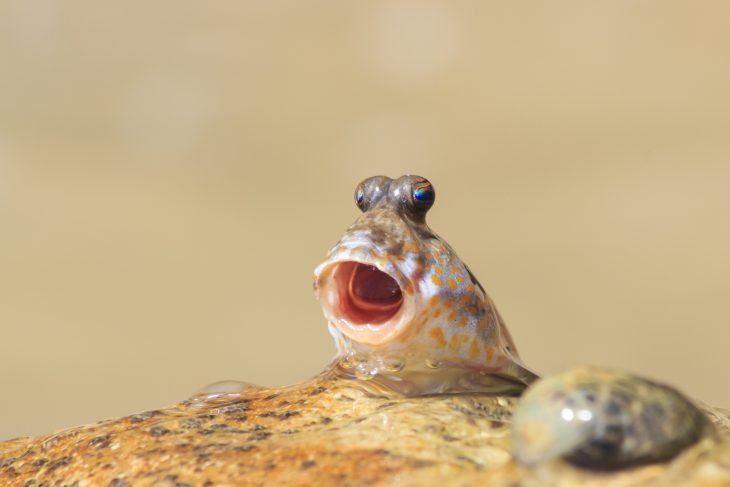
As of today, there are just 6 types of lungfish on Earth, sparsely seen in Africa, South America, and Australia. We do know that lungfish used to be abundant in the past, however, that’s no longer the case. Most lungfish have two lungs with the only exception being the Australian lungfish which only have one lung.
Are there other ways for fish to breathe air?
Indeed there are, albeit rather limited. In addition to the lungs of the few freshwater lungfish, there are also certain types of fish that have vascularized gas bladders. These bladders are little more than simple sacs above the stomach and intestines of the fish that can be filled with air.
The main purpose of these gas bladders is to help the fish float when filled with air – that’s also why they are often called “swim bladders”. Certain deep water fish and bottom-dwelling fish tend to fill their swim bladders with oils instead of gas. By regulating how much air (or oil) they have in their swim bladders, fish can regulate whether their bodies will float or sink.
Such gas or swim bladders (also called fish maw or air bladders) are seen in bony fish and are absent in fish that have cartilage instead of bone tissue in their skeletons. Still, the bony fish group, scientifically known as Osteichthyes fish, is rather large – it consists of 45 orders, 435 families, and 28,000 separate species.
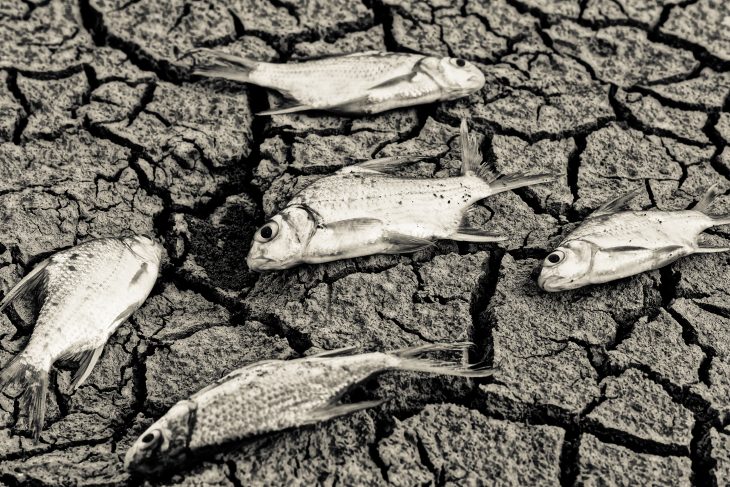
In their early life stages, fish with gas bladders must rise to the surface to fill them up with air through a pneumatic duct. In their later life stages the pneumatic duct that feeds the bladder with air disappears and the fish must rely on their gas glands to feed the bladder with gas – usually the oxygen they get through their gills and the carbon dioxide their bodies produce.
In other words, while gas bladders can absorb some oxygen from the air when the fish is young, they really aren’t a dedicated breathing organ. Especially as the bony fish grow older and the pneumatic duct that can supply the bladder with air disappears, the bladder becomes completely unusable as a breathing tool.
Swim bladders vs lungs
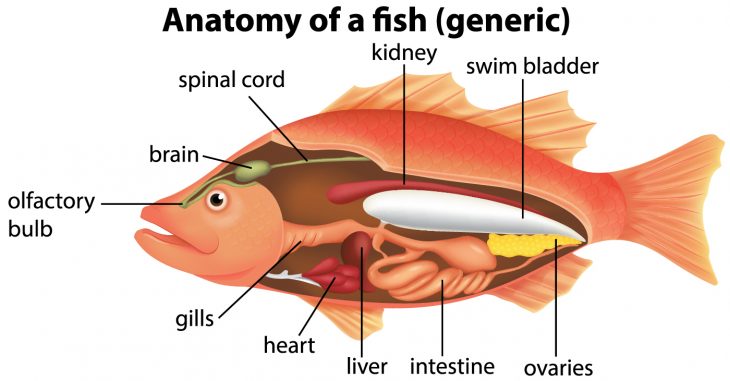
While swim bladders can indeed take on air, and while the fish can absorb some of the oxygen from that air into its bloodstream, air/swim bladders aren’t meant for breathing and fish can’t survive outside of water with them.
Lungs in lungfish, on the other hand, are quite well developed and are fully dedicated breathing organs. They allow lungfish to easily survive outside of water and to even move from one body of water to another, usually when the seasons change and certain rivers or lakes dry up.
From all that it’s rather clear that while the lungs in lungfish and the swim bladders in other bony fish are rather similar, they do serve two very different purposes. Whatever connection there might be between these two organs, one is not a viable breathing tool while the other is present in too few fish species, hence why we often ignore it when we talk about the respiratory system in fish.
In conclusion
By and large, most modern-day fish species don’t have lungs. Instead, they breathe through their gills, which are their own specialized breathing organs. The main difference between fish gills and mammal lungs is that the latter extract oxygen out of the air while the former do it out of the water.
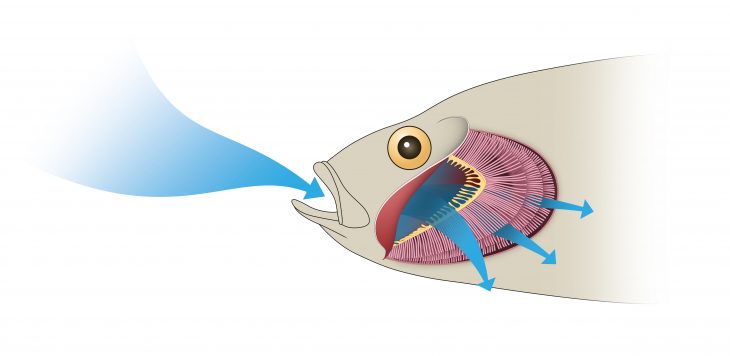
There are only a few species of fish today that have dedicated lungs, allowing them to breathe air, and those are the freshwater lungfish. They are so few, however, that they are little more than an exception to the rule.
Other bony fish species do have air bladders that can fill with air and even absorb a bit of oxygen from it but they are not dedicated breathing organs.
And as for whales and dolphins, while they do have lungs and are fully aquatic animals, they are not really fish but are mammals like us.
